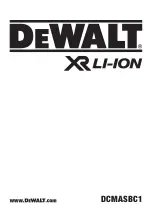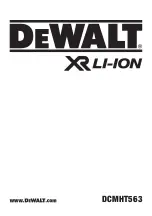
19
Operating Instructions
Changing the tool.
Do not use accessories not specifically
intended and recommended for this
power tool by Würth.
Use of non-original
WÜRTH accessories can lead to overheating and
destroy the power tool.
When changing application tools with sharp cut-
ting edges, use cover 3 21 74 011 00 0 to pro-
tect yourself against hand/arm injuries.
Additional operating instructions.
Guide the power tool toward the work piece only
when switched on.
Before using, sharpen used and even new cutter
blades with the cleaning block.
The symptom for worn blades is a clearly increased
feed force at lower working progress.
The application tool can be offset in 30° steps and fas-
tened in the most favourable working position.
Guide straight, bent or offset cutter blades at a right
angle to the window flange (see page 7–8, Cutter
blades A – D).
For U-shaped cutter blades, pay attention that the
traverse of the cutter blade is led parallel to the win-
dow pane of the vehicle (see page 8, Cutter
blades E – F).
The scraper knife is used for cutting back bond remain-
ders on the window flange or the pane. Before re-
bonding the vehicle window, cut back the remaining
bead to a height of approx. 2 mm (see page 8, Cutter
blades G).
Notes on sanding.
Press the power tool with the sanding sheet briefly and
firmly against a flat surface and briefly switch the
power tool on. This provides for good adhesion and
prevents premature wear.
When only one tip or corner of the sanding sheet is
worn, it can be removed again and reattached turned
by 120°.
Work with the entire surface of the sanding plate, not
only with the tip.
When sanding with small triangle sanding plates,
select a high oscillating frequency (electronics
level 4 – 6); when sanding with the round sanding
plate and the large triangle sanding plate, select a
moderate oscillating frequency (max. electronics
level 4).
Sand with continuous motion applying moderate pres-
sure. Applying excessive pressure does not increase
the rate of removal, it only wears off the sanding sheet
faster.
Notes on sawing chassis sections.
Select a high oscillating frequency. Round saw blades
can be released and clamped offset again, to allow for
uniform wearing off.
Notes on scraping.
Select a moderate to high oscillating frequency.
Dust Extraction
Dusts from materials such as lead-containing coatings,
some wood types, minerals and metal can be harmful
to one’s health. Touching or breathing-in the dusts can
cause allergic reactions and/or lead to respiratory
infections of the user or bystanders.
Certain dusts, such as oak or beech dust, are consid-
ered as carcinogenic, especially in connection with
wood-treatment additives (chromate, wood preserva-
tive). Materials containing asbestos may only be
worked on by specialists.
• Where possible, use a dust extraction system suita-
ble for the material.
• Provide for good ventilation of the working place.
• It is recommended to wear a P2 filter-class respira-
tor.
Observe the relevant regulations in your country for the
materials being worked on.
Maintenance and Cleaning
When working metal under extreme operat-
ing conditions, it is possible for conductive
dust to settle in the interior of the power tool. The total
insulation of the power tool can be impaired. Blow out
the interior of the power tool via the ventilation slots fre-
quently with dry and oil-free compressed air, and con-
nect a residual current device (RCD) on the line side.
When the power tools‘s power cable is damaged, it
must be replaced by a qualified person using a spe-
cially prepaired power cable, available from your
Würth customer service agent.
If required, you can change the following
parts yourself:
Application tools
OBJ_BUCH-0000000323-001.book Page 19 Thursday, August 16, 2018 2:01 PM
















































